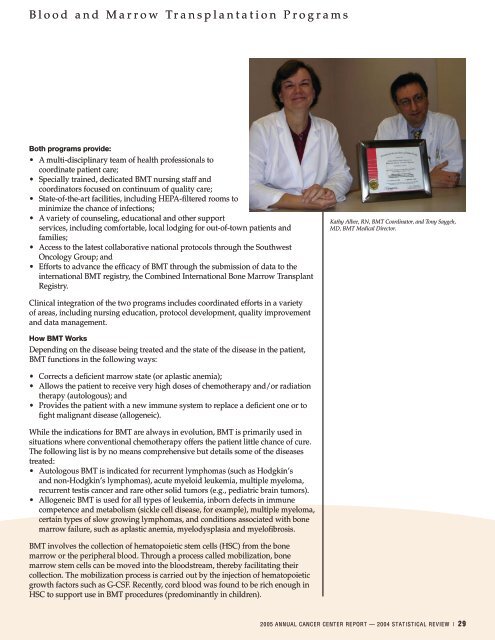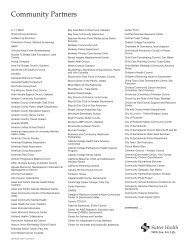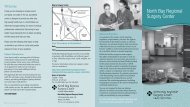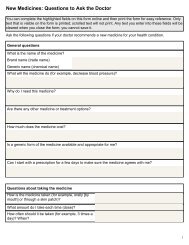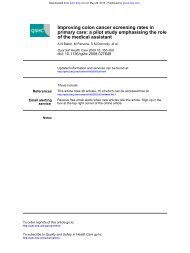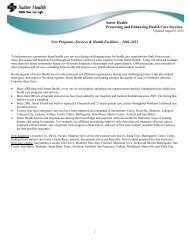Sutter Health Cancer Services and Programs
Sutter Health Cancer Services and Programs
Sutter Health Cancer Services and Programs
Create successful ePaper yourself
Turn your PDF publications into a flip-book with our unique Google optimized e-Paper software.
B l o o d a n d M a r r o w Tr a n s p l a n t a t i o n P r o g r a m sBoth programs provide:• A multi-disciplinary team of health professionals tocoordinate patient care;• Specially trained, dedicated BMT nursing staff <strong>and</strong>coordinators focused on continuum of quality care;• State-of-the-art facilities, including HEPA-filtered rooms tominimize the chance of infections;• A variety of counseling, educational <strong>and</strong> other supportservices, including comfortable, local lodging for out-of-town patients <strong>and</strong>families;• Access to the latest collaborative national protocols through the SouthwestOncology Group; <strong>and</strong>• Efforts to advance the efficacy of BMT through the submission of data to theinternational BMT registry, the Combined International Bone Marrow TransplantRegistry.Kathy Albee, RN, BMT Coordinator, <strong>and</strong> Tony Saygeh,MD, BMT Medical Director.Clinical integration of the two programs includes coordinated efforts in a varietyof areas, including nursing education, protocol development, quality improvement<strong>and</strong> data management.How BMT WorksDepending on the disease being treated <strong>and</strong> the state of the disease in the patient,BMT functions in the following ways:• Corrects a deficient marrow state (or aplastic anemia);• Allows the patient to receive very high doses of chemotherapy <strong>and</strong>/or radiationtherapy (autologous); <strong>and</strong>• Provides the patient with a new immune system to replace a deficient one or tofight malignant disease (allogeneic).While the indications for BMT are always in evolution, BMT is primarily used insituations where conventional chemotherapy offers the patient little chance of cure.The following list is by no means comprehensive but details some of the diseasestreated:• Autologous BMT is indicated for recurrent lymphomas (such as Hodgkin’s<strong>and</strong> non-Hodgkin’s lymphomas), acute myeloid leukemia, multiple myeloma,recurrent testis cancer <strong>and</strong> rare other solid tumors (e.g., pediatric brain tumors).• Allogeneic BMT is used for all types of leukemia, inborn defects in immunecompetence <strong>and</strong> metabolism (sickle cell disease, for example), multiple myeloma,certain types of slow growing lymphomas, <strong>and</strong> conditions associated with bonemarrow failure, such as aplastic anemia, myelodysplasia <strong>and</strong> myelofibrosis.BMT involves the collection of hematopoietic stem cells (HSC) from the bonemarrow or the peripheral blood. Through a process called mobilization, bonemarrow stem cells can be moved into the bloodstream, thereby facilitating theircollection. The mobilization process is carried out by the injection of hematopoieticgrowth factors such as G-CSF. Recently, cord blood was found to be rich enough inHSC to support use in BMT procedures (predominantly in children).2005 Annual <strong>Cancer</strong> Center Report — 2004 Statistical Review | 29


